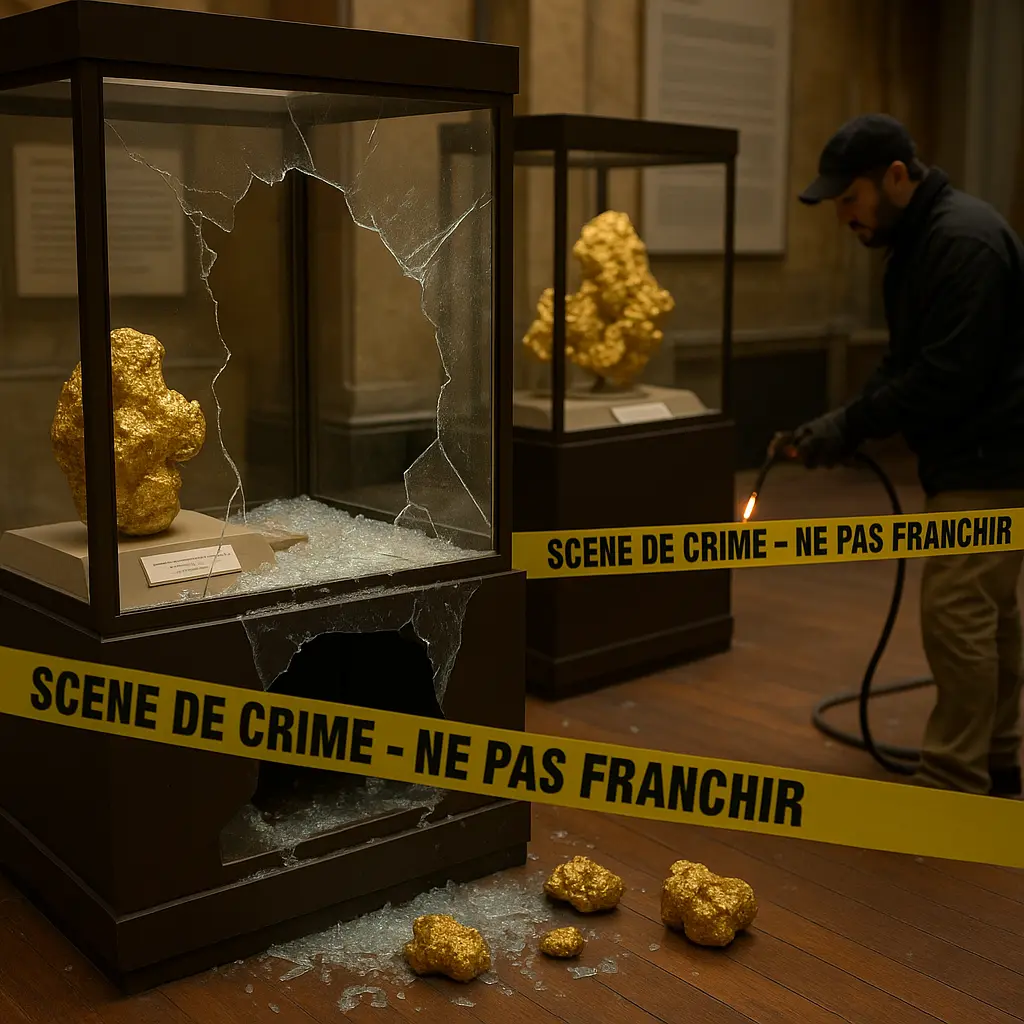
What happened
On September 17, 2025, thieves broke into the National Natural History Museum in Paris and made off with native gold specimens worth roughly €600,000 (about $700,000 USD). @mathrubhumi+2CBS News+2
These weren’t regular gold bars — they were geological samples: raw, naturally occurring gold mixed with silver and other minerals, which are valuable not just for their metal price but also for their scientific and heritage significance. @mathrubhumi+2Le Monde.fr+2
Museum officials say that while the material value is around €600,000, the specimens have “immeasurable heritage value” because they’re part of France’s national geological collections. @mathrubhumi+1
How they did it
The theft was discovered Tuesday morning in the museum’s geology and mineralogy gallery, located in Paris’s 5th arrondissement. Le Monde.fr+2Times of Malta+2
Reports say burglars used angle grinders and blowtorches to break into the building. @mathrubhumi+2Tribune Online+2
Earlier this summer, the museum suffered a cyberattack that disabled its alarm and security systems. French police suspect the thieves may have known exactly when those systems were offline. Le Monde.fr+2@mathrubhumi+2
Why it matters
Not just metal — science and history lost
These gold nuggets aren’t coinage or bullion — they’re mineral specimens used in scientific research and geological study. Losing them means losing part of the historical and scientific record. Le Monde.fr+2@mathrubhumi+2A growing trend of museum break-ins
French museums have recently been hit by several high-profile thefts. This gold heist joins other recent incidents targeting cultural institutions, raising alarms about museum security and heritage protection. Le Monde.fr+1Cybersecurity and physical security collide
The cyberattack that disabled the alarm system highlights a chilling vulnerability: digital breaches can lead directly to physical theft. This heist is a striking example of how cyber and real-world crimes can intersect. Le Monde.fr+2@mathrubhumi+2
What’s next
Can the gold be recovered? Paris police are investigating and examining surveillance records, but it’s unclear if the samples can be retrieved — and even if they are, they may be damaged or melted down.
Who did this? Authorities are looking into whether this was a lone thief or a professional gang with geological knowledge — or something more organized.
How will museums protect items in the future? Expect calls for stricter security: upgrades to alarms, cybersecurity monitoring, physical safes, and tighter controls for precious specimen storage and display.
Should geological specimens be treated like art? There’s now a debate about how scientific specimens should be safeguarded and insured, similar to how museums handle paintings, artifacts, and cultural treasures.
🧠 Bottom line
This was no smash-and-grab of gold bars. The theft at the Paris Natural History Museum reflects a modern kind of museum heist — one where hackers disable alarms and thieves steal not for the resale of gold, but to rob science and heritage. The theft of “immeasurable” geological treasures shows just how vulnerable even scientific collections are in an era when cyber and physical threats are increasingly converging.

Leave a comment
Your email address will not be published. Required fields are marked *